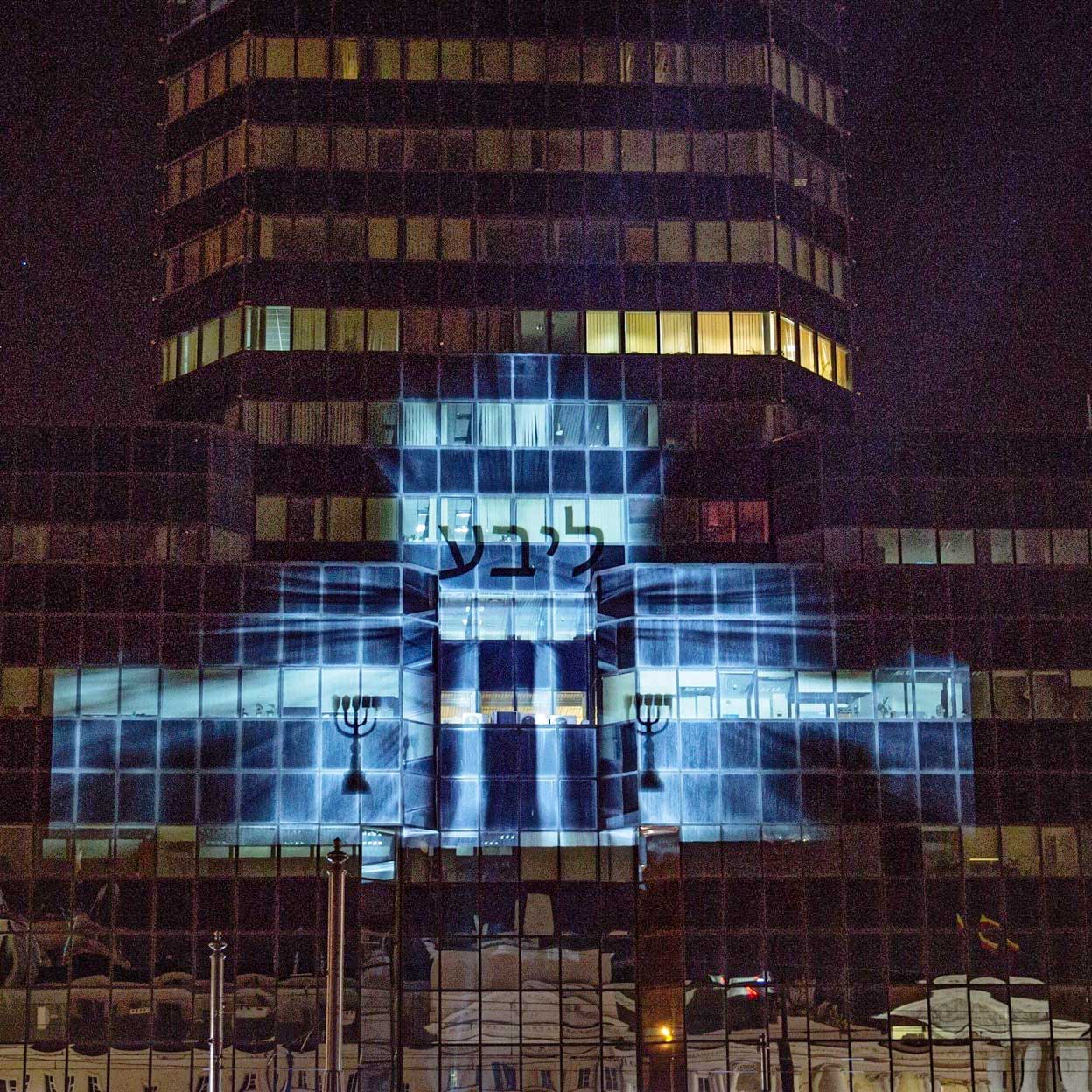The virtual reconstruction
of the Siegen synagogue

Brick by brick, the Siegen synagogue is reassembled on the computer.

As in Warsaw, the word „love“ will light up in Yiddish, i.e., with Hebrew letters, in Siegen.
The multimedia installation encompassing the virtual reconstruction of the Siegen synagogue is not only dedicated to the remembrance of something past. It is simultaneously also related to the present and the future – as former German Chancellor Helmut Schmidt once said: Instead of talking about the „present of the past,“ one should rather talk about the „future of the past.“ In this sense, the Siegen project is also directed towards the future.
The artists involved in the virtual reconstruction of the Siegen synagogue stand with their art and with their lives for the fact that coexistence between nations and religions is possible: The project is a German-Polish-Hungarian and, at the same time, Jewish-Christian co-production. The artists come from countries in which nationalist-autocratic governments are transforming democracy into authoritarian forms of government, as in Hungary and Poland; and from countries where anti-Semitism permeates all strata of society, as in Germany. The project is thus also intended as a warning and reminder against growing hostility towards Jews.
„This project shows that art has the power to compel us to Remember, to bring us into Hope, to inspire our Healing, and to call us into a Greater Love.“
Frederick Whittaker, US HOLOCAUST EXPERT
A look behind the scenes: Virtual reconstruction of the Siegen Synagogue (Making of)
If we don’t work on our collective memory, we will pass on our problems to the next generations and their children.“
Gabriela von Seltmann



